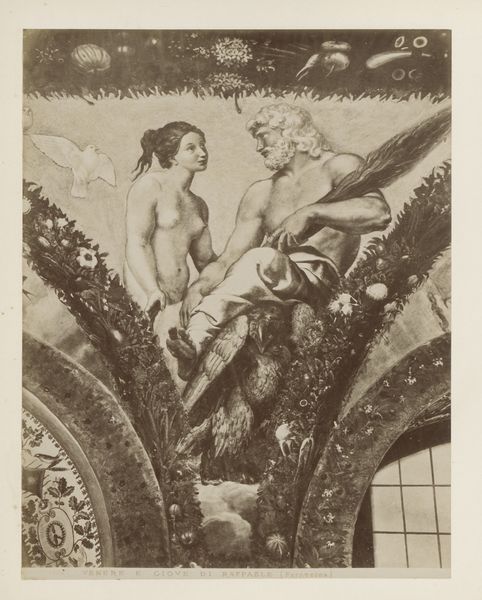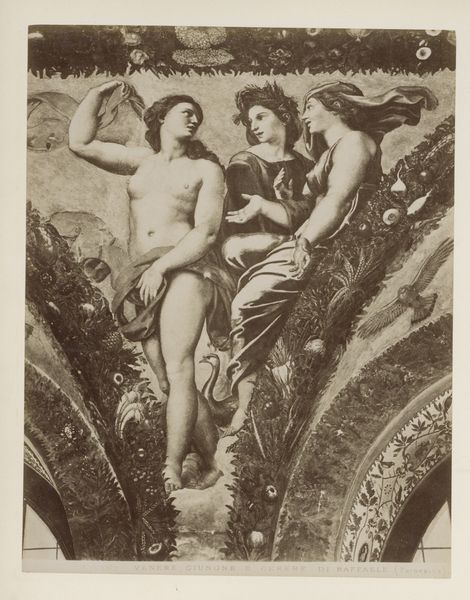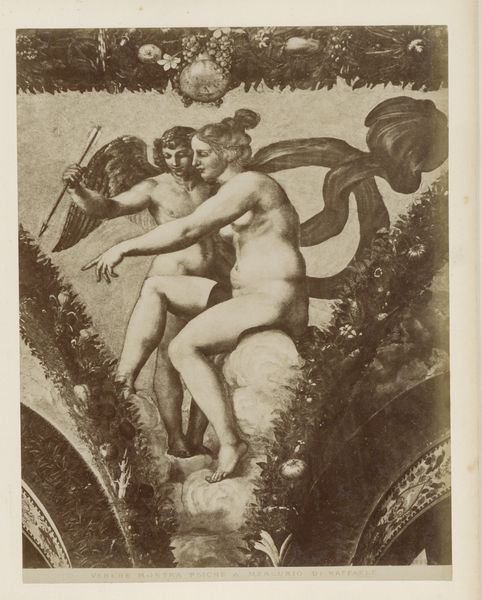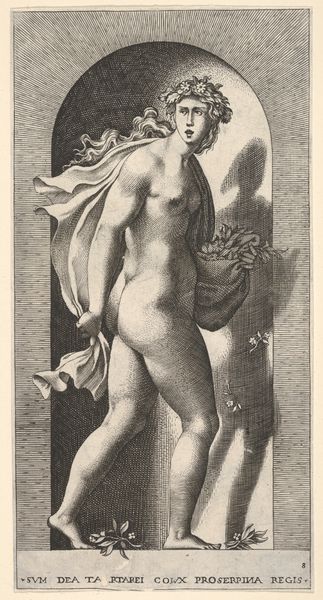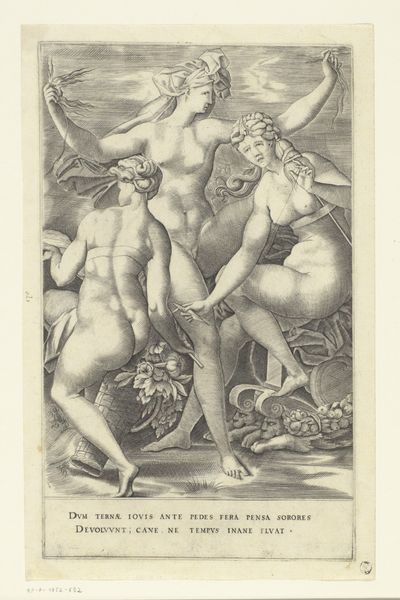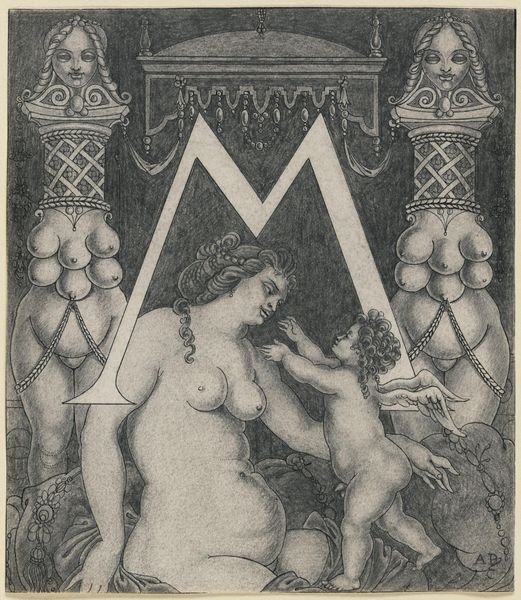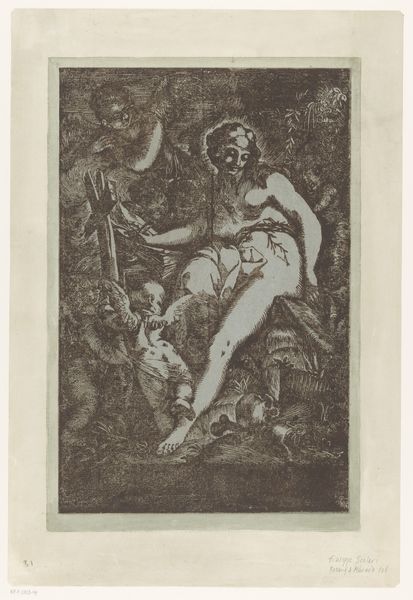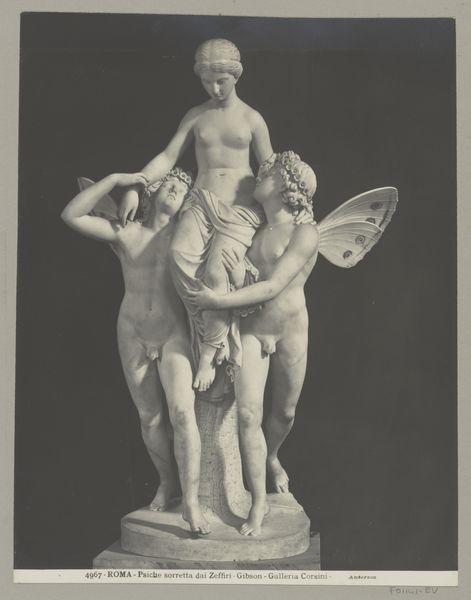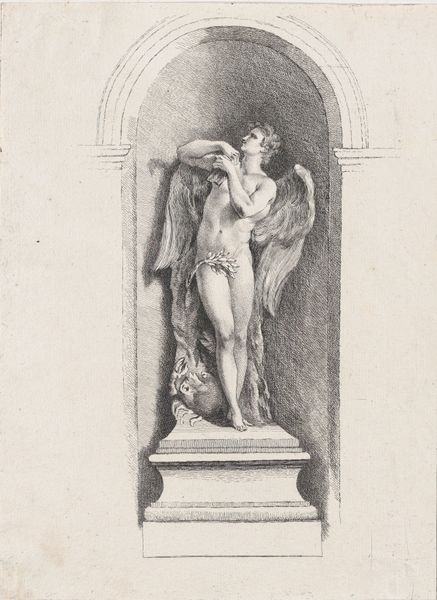
Fotoreproductie van fresco Cupido toont Psyche aan de Gratiën door Rafaël in het Farnesina te Rome c. 1870 - 1890
0:00
0:00
#
pencil drawn
#
toned paper
#
light pencil work
#
pencil sketch
#
charcoal drawing
#
charcoal art
#
pencil drawing
#
pencil work
#
tonal art
#
charcoal
Dimensions: height 261 mm, width 203 mm
Copyright: Rijks Museum: Open Domain
Curator: This photograph captures a reproduction of Raphael's fresco, "Cupido toont Psyche aan de Gratiën," originally in the Farnesina, Rome. Dating from around 1870 to 1890, it’s attributed to Domenico Anderson. Editor: Wow, even in this aged, sepia-toned reproduction, the fresco's exuberance sings out. I mean, you can practically smell the sweet nectar and ambrosia those Graces have been nibbling on! The light in here seems kind. Curator: Indeed. It speaks to the rise of photography and its role in disseminating artistic masterpieces to a wider audience. Anderson's work provided access to art previously confined to specific locations and social elites, democratizing art appreciation. Editor: Democratizing… such a grand word for what seems like simple joy captured! Look at Psyche, so tentative yet luminous. You can sense Cupido's pride presenting his…discovery, shall we say. I love the slight blurriness. It reminds me of half-remembered dreams, Renaissance style. Curator: The "rediscovery," more accurately reflects its humanist context within art history. Raphael was of course appropriating an antique aesthetic. And a photograph of it introduces questions about originality, authenticity and dissemination. The image's materiality also influences its message. This image isn’t about conveying divine power in visual display; it is also about showing you have traveled and experienced worldliness. Editor: Worldliness in a faded sepia print? Perhaps the world became smaller thanks to this sort of imagery? Imagine owning a piece of the Renaissance in your parlor. Makes one wonder what will remain when the world moves to ones and zeros...but then again, that might be pretty joyful as well. Curator: Perhaps the dialogue around who accesses and controls the "ones and zeros" of the visual record will dominate future discussions. Editor: Oh, I think you're probably right. I suppose even art history ends up in the parlor someday. Thanks! Curator: My pleasure.
Comments
No comments
Be the first to comment and join the conversation on the ultimate creative platform.
